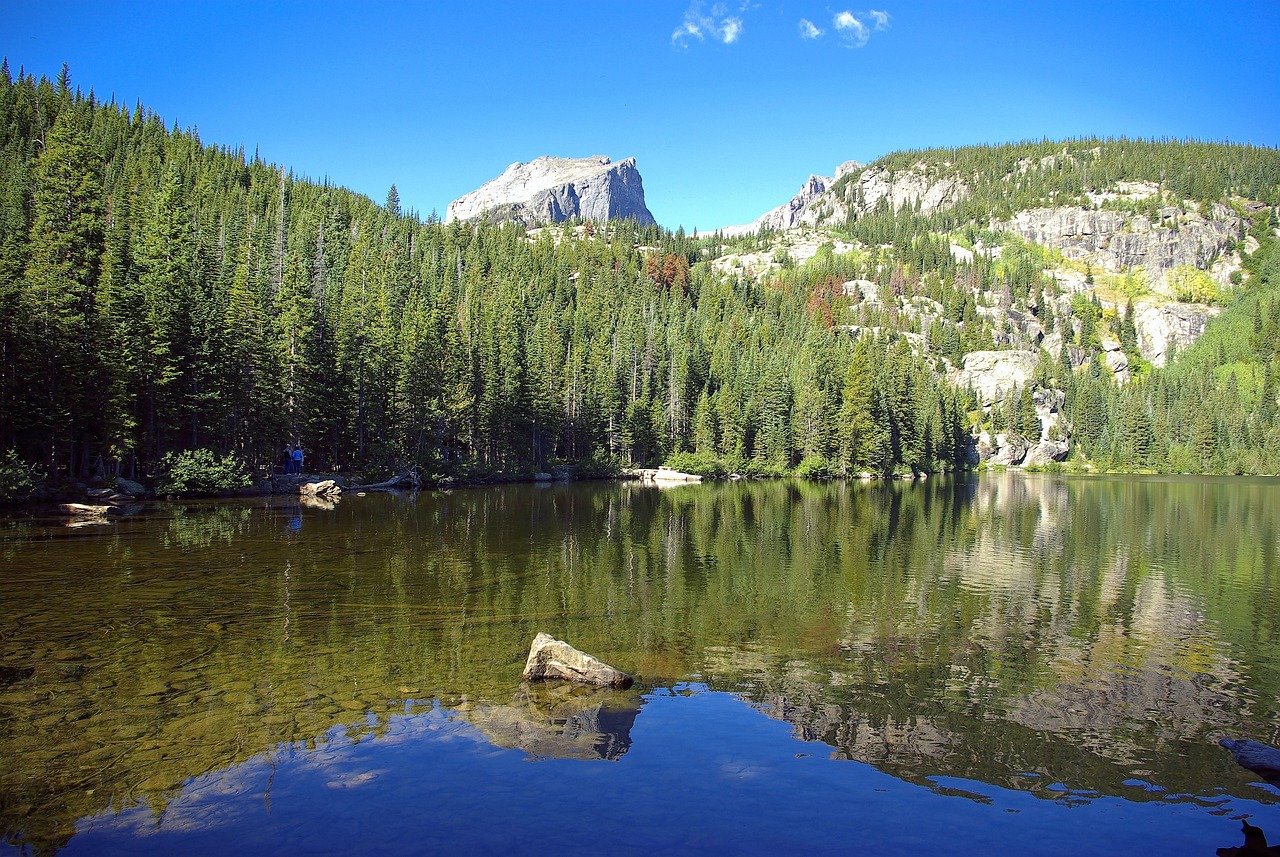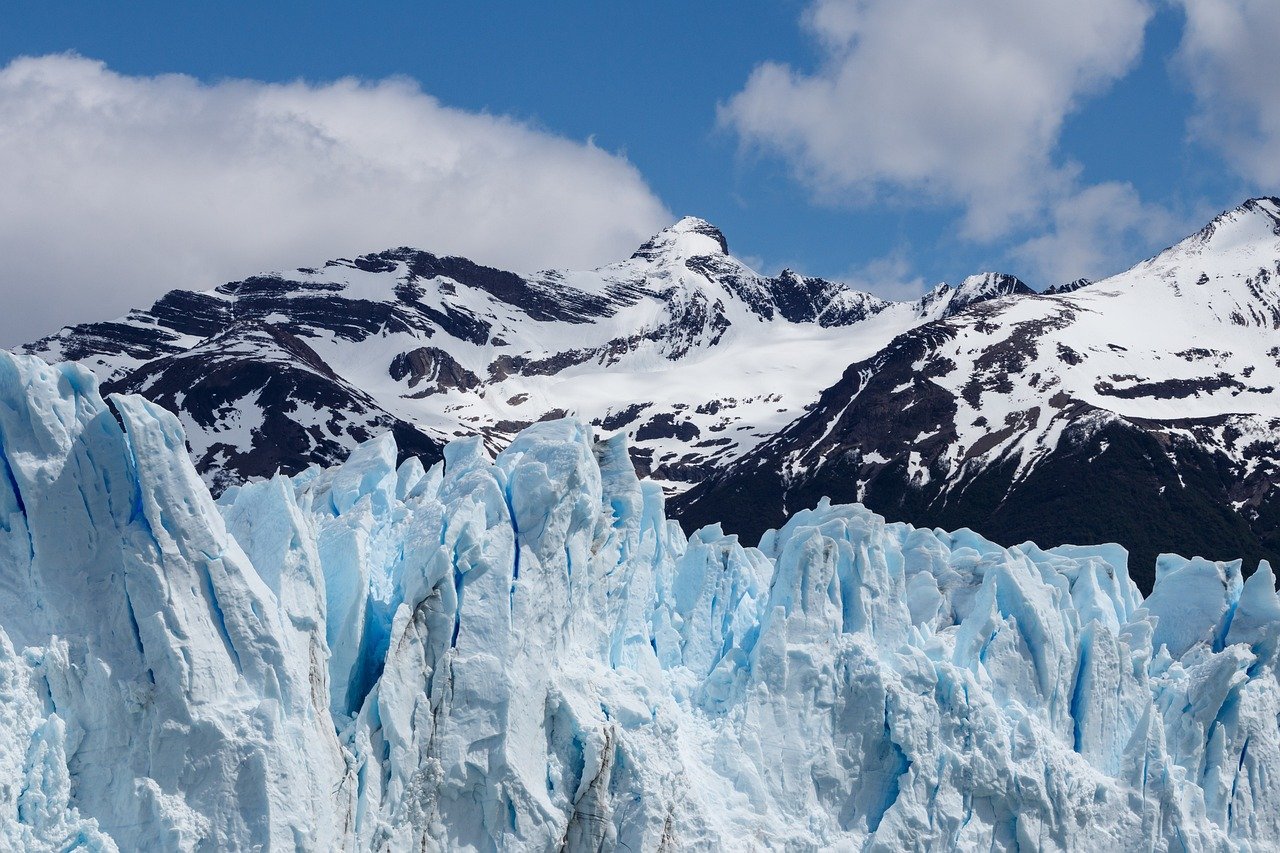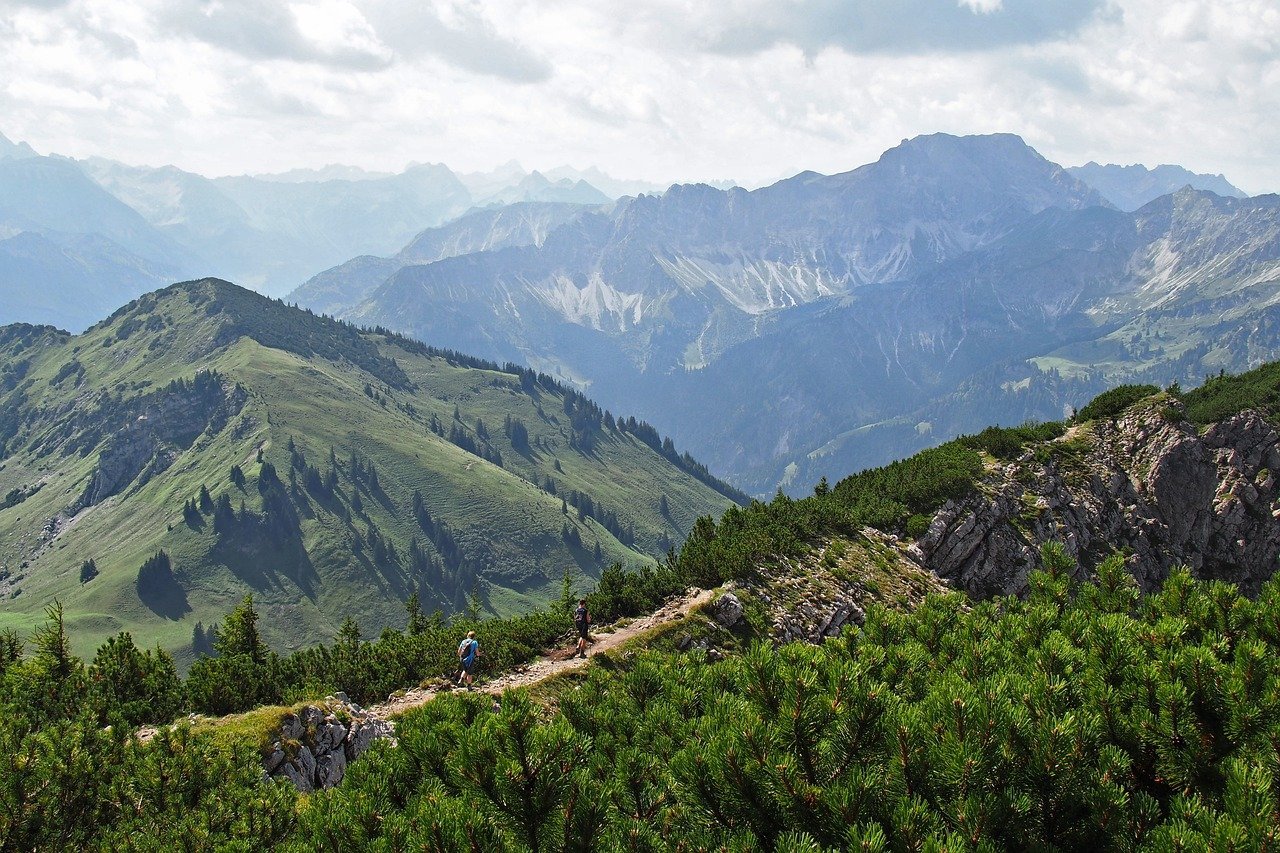Introduction:
When it comes to the best hikes in Rocky Mountain National Park, few places in the United States offer such an incredible diversity of trails and landscapes. This hiker’s paradise features everything from tranquil lake walks to challenging summit climbs, all set against the backdrop of towering peaks and expansive valleys. Whether you’re a seasoned adventurer or a casual nature enthusiast, Rocky Mountain National Park provides countless opportunities to connect with the wild beauty of the Rockies.
Exploring these trails not only allows hikers to experience the park’s stunning natural scenery but also offers a chance to discover its rich wildlife and unique ecosystems. As you prepare to hike in this magnificent park, remember to do so responsibly, preserving its pristine environment for generations to come.
Top Hikes in Rocky Mountain National Park
Bear Lake Loop
The Bear Lake Loop is one of the most accessible and family-friendly trails in Rocky Mountain National Park. Located at an elevation of 9,450 feet, this scenic trail is perfect for hikers of all ages and skill levels. The loop is just 0.6 miles long, making it an easy hike that can be completed in under 30 minutes. Its well-maintained path circles the pristine Bear Lake, offering panoramic views of the surrounding peaks, including Hallett Peak and the Continental Divide.
What makes the Bear Lake Loop stand out is its year-round accessibility. In the summer, hikers are treated to wildflower blooms and the shimmering reflections of the surrounding mountains on the lake’s surface. In winter, the trail transforms into a snowy wonderland, perfect for snowshoeing or a peaceful walk amidst snow-covered pines.
This trail is particularly popular among families due to its short length, minimal elevation gain, and the incredible scenery at every turn. Whether you’re stopping for a picnic by the lake or simply enjoying the fresh mountain air, the Bear Lake Loop provides a gentle introduction to the beauty of Rocky Mountain National Park.

Emerald Lake Trail
The Emerald Lake Trail is one of the most popular hikes in Rocky Mountain National Park, known for its breathtaking views and rewarding experience. This 3.6-mile round-trip hike takes you through some of the park’s most stunning alpine scenery, passing three picturesque lakes—Nymph Lake, Dream Lake, and finally, Emerald Lake—each offering its own unique charm.
Exploring Yellowstone: Popular Hiking Trails and Essential Tips
Starting at the Bear Lake Trailhead, the trail begins with a moderate incline, quickly leading you to Nymph Lake, a small, serene lake surrounded by water lilies. As you continue your hike, you’ll arrive at Dream Lake, which is nestled in a scenic valley with towering peaks on either side. This section of the trail provides ample opportunities for photography, especially in the early morning when the lake reflects the surrounding mountains.
The final destination, Emerald Lake, is the true highlight of the hike. Tucked beneath the towering Hallett Peak and Flattop Mountain, Emerald Lake’s crystal-clear waters and dramatic backdrop make it a favorite among visitors. The hike to Emerald Lake is moderately challenging, with a total elevation gain of around 700 feet, but it’s well worth the effort for the stunning views.
This trail is accessible year-round, though conditions vary. In the summer, wildflowers and lush greenery surround the lakes, while fall brings vibrant foliage. In winter, the trail becomes snow-covered, and hikers often use snowshoes or microspikes to navigate. The best times to hike the Emerald Lake Trail are during the spring and fall when the temperatures are mild, and the trail is less crowded.

Sky Pond via Glacier Gorge Trail
Sky Pond, reached via the Glacier Gorge Trail, is one of the most challenging yet rewarding hikes in Rocky Mountain National Park. Spanning approximately 9 miles round trip, this trail takes you on a journey through some of the park’s most stunning alpine landscapes, including pristine lakes, cascading waterfalls, and breathtaking mountain views.
The hike begins at the Glacier Gorge Trailhead and initially follows a well-maintained path that leads to Alberta Falls, a powerful waterfall that is one of the early highlights of the hike. As you continue, you’ll pass The Loch, a beautiful alpine lake surrounded by towering cliffs. From here, the trail becomes steeper and more rugged as you approach Timberline Falls, where hikers must scramble up a short but challenging rock face to reach the top.
Once past Timberline Falls, the trail flattens out, leading you to the enchanting Glass Lake and, finally, Sky Pond. Nestled between jagged peaks, Sky Pond is a stunning alpine lake surrounded by dramatic rock formations. The scenery here is truly breathtaking, with the sheer cliffs of the Cathedral Spires providing an awe-inspiring backdrop.
This hike is considered strenuous due to its length, elevation gain of over 1,600 feet, and the rock scramble near Timberline Falls. However, the effort is well worth it for those seeking adventure and unparalleled views. It’s best to hike this trail during the summer and early fall, as snow and ice can make the route dangerous in winter and early spring.

Longs Peak via the Keyhole Route
Longs Peak via the Keyhole Route is the ultimate challenge in Rocky Mountain National Park, standing at a towering elevation of 14,259 feet. This strenuous and demanding trail is one of Colorado’s most iconic “fourteeners” and is recommended only for experienced hikers due to its difficult terrain, significant elevation gain, and unpredictable weather conditions. The 15-mile round-trip hike requires both physical endurance and mental preparation, making it a true test for those seeking adventure.
The Keyhole Route begins at the Longs Peak Trailhead, gradually ascending through the dense pine forests and alpine meadows. After passing through the treeline, the trail becomes increasingly rugged, with steep switchbacks leading up to the Boulder Field. The Boulder Field, a rocky expanse scattered with large boulders, is the gateway to the Keyhole, a famous rock formation that marks the beginning of the most technical section of the hike.
Beyond the Keyhole, the terrain becomes even more challenging. Hikers must navigate narrow ledges, steep cliffs, and loose rocks, with sections of the route requiring careful scrambling. The final push to the summit involves crossing the Homestretch, a steep, exposed slope where caution is crucial. At the top, hikers are rewarded with panoramic views of the surrounding mountains and valleys, making the strenuous journey worthwhile.
Preparation and Safety Tips:
Early Start: Begin your hike before dawn to allow enough time to reach the summit and descend before afternoon thunderstorms, which are common in the summer months.
Altitude: Be aware of altitude sickness, as the elevation gain of over 5,000 feet can affect even seasoned hikers. Acclimatization and hydration are essential.
Gear: Bring appropriate gear, including layers for changing weather conditions, sturdy footwear, and gloves for scrambling. Microspikes may be necessary if ice or snow is present.
Weather: Check the weather forecast and be prepared to turn back if conditions worsen. High winds, lightning, and sudden temperature drops are common at higher elevations.
Fitness: Ensure you are in peak physical condition, as the combination of distance, elevation gain, and difficult terrain makes this one of the most challenging hikes in the park.
For those who successfully complete the Keyhole Route, the sense of accomplishment is immense. However, safety should always be the top priority on this demanding trail.

Chasm Lake Trail:
The Chasm Lake Trail is a moderately difficult yet rewarding hike in Rocky Mountain National Park, offering hikers breathtaking views of the towering Longs Peak. This 8.4-mile round-trip trail takes you through a stunning variety of landscapes, from dense pine forests to open alpine meadows, with Chasm Lake as the ultimate prize at the base of the majestic Longs Peak.
The trail begins at the Longs Peak Trailhead and gradually ascends through a forested area before reaching the treeline. As you climb higher, the views open up to expansive vistas of surrounding peaks and valleys. The final section of the trail involves a short rock scramble before reaching the lake, where hikers are greeted with dramatic reflections of Longs Peak’s east face in the crystal-clear waters of Chasm Lake.
Trail conditions can vary depending on the season. In the summer, the trail is generally clear, although afternoon thunderstorms are common, so an early start is recommended. In the winter and early spring, snow and ice can make the hike more challenging, and snowshoes or microspikes may be necessary. Wildlife encounters are frequent along this trail, with elk, marmots, and pikas often spotted in the alpine meadows.
The panoramic vistas along the Chasm Lake Trail are nothing short of spectacular, making it a favorite among photographers and nature lovers. From the towering granite walls of Longs Peak to the serene beauty of Chasm Lake, this trail offers some of the most dramatic scenery in the park, making it a must-do hike for those seeking an adventure with unforgettable views.

Ute Trail to Tombstone Ridge:
The Ute Trail to Tombstone Ridge is a scenic ridge hike in Rocky Mountain National Park that offers expansive views and a unique experience of the park’s fragile alpine tundra ecosystem. Spanning approximately 4 miles round-trip, this trail is ideal for those seeking solitude and a less crowded hiking experience while still enjoying stunning vistas.
Starting at an elevation of around 11,500 feet, the Ute Trail is relatively flat, making it accessible to hikers of various skill levels. The highlight of this hike is the panoramic views it offers, including sweeping vistas of the Continental Divide, distant mountain ranges, and the vast tundra below. On clear days, hikers can see as far as the Great Plains to the east.
What makes this trail particularly special is the opportunity to walk through the alpine tundra, a delicate and rare environment found at high elevations. The tundra is characterized by its short, hardy vegetation, which includes grasses, wildflowers, and mosses, adapted to survive in the harsh conditions of this high-altitude landscape. The Ute Trail provides an up-close view of this unique environment while offering hikers a sense of peaceful isolation.
Because of its high elevation and exposed terrain, the trail is best hiked during the summer months when conditions are more favorable. However, even in summer, temperatures can be cool, and afternoon storms are common, so it’s essential to come prepared with layers and rain gear. The Ute Trail to Tombstone Ridge is perfect for those looking to escape the crowds and experience Rocky Mountain National Park’s rugged beauty in relative tranquility.

Best Time to Hike in Rocky Mountain National Park:
Hiking in Rocky Mountain National Park is a year-round activity, but the best time to hike largely depends on the type of experience you’re seeking and your tolerance for weather conditions. Each season offers its own unique set of challenges and rewards, so it’s important to plan your hikes accordingly.
Summer (June to September):
Summer is the most popular time to hike in the park, thanks to its warmer temperatures and accessible trails. During this period, most of the snow has melted from the higher elevations, and the alpine meadows are bursting with wildflowers. Summer also offers the longest days, allowing hikers to tackle longer trails without worrying about daylight. Popular trails like Emerald Lake, Bear Lake Loop, and Sky Pond are at their best during this season.
However, summer also brings large crowds, especially on weekends. Additionally, afternoon thunderstorms are common, particularly in July and August. Hikers should start early to avoid getting caught in dangerous weather conditions above the treeline.
Fall (September to October)
Fall is another excellent time to hike in Rocky Mountain National Park. The summer crowds begin to thin out, and the cooler temperatures make for pleasant hiking conditions. The highlight of fall hiking is the stunning display of autumn foliage, particularly the golden aspen trees. The Ute Trail to Tombstone Ridge and the Chasm Lake Trail are great options for fall hikes, offering spectacular views and fewer crowds.
While fall is beautiful, it’s important to note that snow can start to accumulate in higher elevations as early as October. Hikers should be prepared for variable conditions and shorter daylight hours.
Winter (November to March):
Winter hiking in the park offers a completely different experience, with snow-covered landscapes and peaceful solitude. Trails like Bear Lake Loop and Emerald Lake are popular for snowshoeing and winter hiking. While the scenery is stunning, winter hiking comes with significant challenges, including icy trails, cold temperatures, and unpredictable weather. Snowshoes, microspikes, and layered clothing are essential for safety.
Because many higher elevation trails are buried in deep snow, winter hikers should stick to lower elevation hikes or well-trafficked trails. It’s also crucial to start early, as daylight hours are limited.
Spring (April to May):
Spring in Rocky Mountain National Park is a transitional period, with melting snow making some trails muddy or impassable. While lower elevation trails begin to thaw, higher elevation trails like Longs Peak via Keyhole Route may still be covered in snow well into June. Hikers should check trail conditions regularly during this time and be prepared for rapidly changing weather.
Recommendations:
– Summer: Emerald Lake Trail, Sky Pond via Glacier Gorge Trail, Longs Peak via Keyhole Route (for experienced hikers).
– Fall: Ute Trail to Tombstone Ridge, Chasm Lake Trail, Bear Lake Loop (for autumn foliage views).
– Winter: Bear Lake Loop, Dream Lake, and Emerald Lake (for snowshoeing or winter hikes).
– Spring: Lower elevation trails like the Cub Lake Trail and sections of the Ute Trail, avoiding snow-covered higher elevations.
In conclusion, while summer and fall are the prime seasons for hiking in Rocky Mountain National Park, each season offers unique opportunities for exploration. Choosing the right trail and being prepared for the conditions will ensure a safe and enjoyable hiking experience year-round.
Safety Tips for Hiking in Rocky Mountain National Park
Hiking in Rocky Mountain National Park offers incredible scenery and outdoor adventure, but it’s essential to prioritize safety to ensure a positive experience. Whether you’re hiking in the summer or braving the winter conditions, proper preparation, awareness of altitude effects, and wildlife precautions are crucial.
General Hiking Safety:
– Preparation: Before heading out, research the trail and check current conditions, especially in winter when trails can be icy or snow-covered. Inform someone of your hiking plans and estimated return time.
– Gear and Essentials: Bring appropriate gear based on the season. Essentials include a map, compass or GPS, extra layers of clothing, sufficient water, snacks, sunscreen, and a first aid kit. For longer or more challenging hikes, consider carrying trekking poles, microspikes, or snowshoes. Headlamps are essential, especially if you’re hiking in early morning or late afternoon when visibility is low.
– Start Early: Afternoon thunderstorms are common in summer, so aim to summit or complete exposed sections of your hike before noon.
Dealing with Altitude Sickness:
Altitude sickness is a concern for many visitors to Rocky Mountain National Park, especially since many of the park’s trails exceed 10,000 feet in elevation. Symptoms include headaches, nausea, dizziness, and shortness of breath.
– Acclimatization: Spend a day or two at a lower elevation to allow your body to adjust before attempting high-elevation hikes.
– Hydration: Drink plenty of water to stay hydrated and avoid alcohol, which can exacerbate altitude sickness symptoms.
– Pace Yourself: Ascend slowly, taking frequent breaks to allow your body time to adjust to the altitude. If symptoms persist, descend to a lower elevation immediately.
Weather Changes:
Weather in the Rocky Mountains can change rapidly, so being prepared for sudden shifts is critical.
– Layered Clothing: Dress in layers, allowing you to adjust to temperature changes throughout the day. Even in summer, temperatures can drop significantly at higher elevations.
– Rain Gear: Afternoon thunderstorms are frequent in summer, so always carry a rain jacket and be prepared to seek shelter if lightning is in the area. Avoid ridgelines and exposed areas during storms.
Wildlife Safety:
Rocky Mountain National Park is home to diverse wildlife, including elk, deer, mountain lions, and bears. Respecting wildlife and knowing how to respond during encounters is essential for your safety.
– Bear Encounters: Black bears are common in the park. To avoid encounters, store food and scented items in bear-proof containers or your vehicle. If you encounter a bear, remain calm, make yourself appear larger, and slowly back away without turning your back on the animal. Never run from a bear.
– Mountain Lions: If you encounter a mountain lion, maintain eye contact, make yourself look larger, and speak firmly. Do not crouch down or run. If attacked, fight back.
– Elk and Moose: Keep a safe distance from large animals like elk and moose, especially during the fall rutting season when males can be more aggressive. Use binoculars or zoom lenses to observe from afar.
By following these safety tips, you can minimize risks and fully enjoy your hiking experience in Rocky Mountain National Park. Always remember that safety is your responsibility, and preparation is key to a successful adventure.
Permits, Accessibility, and Park Regulations
Rocky Mountain National Parkr equires specific permits for certain activities, especially for those planning to hike in the backcountry or camp overnight. Understanding the park’s regulations is essential for both protecting the environment and ensuring a safe and enjoyable experience.
Permits and Backcountry Access:
For day hiking, no permits are generally required. However, if you plan to camp overnight in the backcountry, a permit is necessary. Backcountry permits are limited and must be reserved in advance through the park’s website, particularly during the peak season. The permit system helps manage the impact on fragile ecosystems and ensures a more sustainable experience for everyone.
For technical climbs or mountaineering, a special climbing permit may also be required. Additionally, those hiking to Longs Peak, one of the park’s most popular destinations, should be aware that timed entry permits may be required during peak visitation periods, typically from late May through early October.
Trail Etiquette and Environmental Protection:
To protect the park’s delicate environment, it’s crucial to stay on designated trails at all times. Straying off-trail can damage fragile alpine tundra and disrupt wildlife habitats. Visitors are encouraged to practice the Leave No Trace principles, which include packing out all trash, minimizing campfire impacts, and respecting wildlife.
Camping Regulations:
The park offers both frontcountry and backcountry camping. For frontcountry sites, reservations are recommended and can be made through Recreation.gov. Backcountry campers must follow strict guidelines, including camping only in designated sites and using bear-proof storage for food to prevent wildlife encounters. Campfires are generally prohibited in the backcountry to minimize the risk of wildfires.
By adhering to these regulations and practicing responsible outdoor ethics, visitors can help preserve Rocky Mountain National Park’s beauty for future generations.
Conclusion:
The best hikes in Rocky Mountain National Park offer an unparalleled opportunity to experience the breathtaking beauty of the Rockies. Whether you’re exploring serene lakes, rugged peaks, or expansive valleys, each trail showcases the park’s diverse landscapes and rich wildlife. Hiking here is not just about the physical journey but also about connecting with nature in its purest form.
As you venture out on these unforgettable trails, remember the importance of responsible exploration. By following park regulations and preserving the environment, you contribute to protecting this natural treasure for future generations. Ultimately, hiking in Rocky Mountain National Park is an experience that leaves a lasting impression, offering moments of awe, peace, and adventure in the heart of nature.

A code promo 1xBet est un moyen populaire pour les parieurs d’obtenir des bonus exclusifs sur la plateforme de paris en ligne 1xBet. Ces codes promotionnels offrent divers avantages tels que des bonus de dépôt, des paris gratuits, et des réductions spéciales pour les nouveaux joueurs ainsi que les utilisateurs réguliers.code promo gratuit 1xbet
I am really inspired together with your writing talents as neatly as
with the format to your blog. Is this a paid topic or did
you modify it yourself? Anyway keep up the nice quality
writing, it’s rare to see a great weblog like this one today.
Affilionaire.org!
продажа аккаунтов соцсетей маркетплейс аккаунтов
магазин аккаунтов безопасная сделка аккаунтов
магазин аккаунтов социальных сетей продать аккаунт
маркетплейс для реселлеров маркетплейс аккаунтов
маркетплейс аккаунтов маркетплейс для реселлеров
маркетплейс для реселлеров площадка для продажи аккаунтов
платформа для покупки аккаунтов безопасная сделка аккаунтов
маркетплейс аккаунтов магазин аккаунтов
профиль с подписчиками аккаунт для рекламы
покупка аккаунтов магазин аккаунтов социальных сетей
платформа для покупки аккаунтов услуги по продаже аккаунтов
маркетплейс для реселлеров гарантия при продаже аккаунтов
купить аккаунт купить аккаунт
купить аккаунт заработок на аккаунтах
Online Account Store Secure Account Purchasing Platform
Sell Pre-made Account Buy Account
Website for Buying Accounts Account Buying Service
Accounts for Sale Sell Account
Account Purchase Guaranteed Accounts
Account Buying Platform Account Sale
Online Account Store Purchase Ready-Made Accounts
Find Accounts for Sale Online Account Store
Guaranteed Accounts Guaranteed Accounts
Gaming account marketplace Website for Buying Accounts
account trading service ready-made accounts for sale
accounts for sale sell account
account selling platform account trading service
account trading platform sell accounts
secure account sales buy account
account marketplace accounts for sale
account catalog account selling platform
buy and sell accounts account selling platform
account market buy accounts
account marketplace secure account sales
account exchange account market
sell pre-made account account buying platform
database of accounts for sale account catalog
account market social media account marketplace
ready-made accounts for sale account store
buy account database of accounts for sale
ready-made accounts for sale account trading service
profitable account sales guaranteed accounts
guaranteed accounts account marketplace
account exchange service account exchange
account marketplace account catalog
account trading service account marketplace
buy accounts account trading platform
gaming account marketplace account acquisition
website for buying accounts sell account
verified accounts for sale account exchange service
buy and sell accounts secure account sales
account marketplace https://accounts-offer.org
find accounts for sale https://accounts-marketplace.xyz/
account acquisition https://accounts-marketplace.live
database of accounts for sale https://social-accounts-marketplace.xyz
account marketplace https://buy-accounts.space
account trading platform account marketplace
ready-made accounts for sale accounts market
marketplace for ready-made accounts https://accounts-marketplace.online/
buy and sell accounts https://social-accounts-marketplace.live
profitable account sales https://accounts-marketplace-best.pro
продать аккаунт akkaunty-na-prodazhu.pro
маркетплейс аккаунтов rynok-akkauntov.top
продать аккаунт kupit-akkaunt.xyz
Happy to join conversations, exchange ideas, and gain fresh perspectives along the way.
I enjoy understanding different opinions and adding to the conversation when possible. Happy to hear different experiences and meeting like-minded people.
That’s my web-site-AutoMisto24
https://automisto24.com.ua/
покупка аккаунтов https://akkaunt-magazin.online/
магазин аккаунтов https://akkaunty-market.live
продажа аккаунтов kupit-akkaunty-market.xyz
площадка для продажи аккаунтов akkaunty-optom.live
магазин аккаунтов https://online-akkaunty-magazin.xyz/
маркетплейс аккаунтов https://akkaunty-dlya-prodazhi.pro
магазин аккаунтов https://kupit-akkaunt.online
buy fb ad account buy old facebook account for ads
buy facebook accounts cheap facebook accounts for sale
buy fb ads account https://buy-ad-account.top
buy aged fb account buy ad account facebook
buy a facebook ad account https://ad-account-buy.top
buy account facebook ads buy ad account facebook
buy aged facebook ads accounts buy facebook ad account
Этот увлекательный информационный материал подарит вам массу новых знаний и ярких эмоций. Мы собрали для вас интересные факты и сведения, которые обогатят ваш опыт. Откройте для себя увлекательный мир информации и насладитесь процессом изучения!
Подробнее можно узнать тут – https://medalkoblog.ru/
Этот обзорный материал предоставляет информационно насыщенные данные, касающиеся актуальных тем. Мы стремимся сделать информацию доступной и структурированной, чтобы читатели могли легко ориентироваться в наших выводах. Познайте новое с нашим обзором!
Детальнее – https://medalkoblog.ru/
cheap facebook account https://buy-ad-account.click
buying fb accounts cheap facebook account
buy google ads threshold account buy aged google ads accounts
buy aged google ads accounts https://buy-ads-accounts.click/
fb account for sale https://buy-accounts.click
buy google ads threshold accounts https://ads-account-for-sale.top
buy google ads https://ads-account-buy.work
google ads account for sale buy aged google ads account
buy google agency account google ads account buy
google ads agency accounts https://buy-ads-agency-account.top
buy aged google ads account https://sell-ads-account.click
buy account google ads https://ads-agency-account-buy.click
buy facebook business manager accounts buy-business-manager.org
buy google ads verified account https://buy-verified-ads-account.work
facebook business manager account buy https://buy-bm-account.org
buy facebook bm https://buy-verified-business-manager-account.org
buy business manager facebook https://buy-verified-business-manager.org/
buy facebook bm account https://business-manager-for-sale.org
unlimited bm facebook buy-business-manager-verified.org
buy business manager account buy verified business manager
verified bm for sale https://verified-business-manager-for-sale.org
facebook business manager account buy business manager for sale
tiktok ads account buy https://buy-tiktok-ads-account.org
buy tiktok business account https://tiktok-ads-account-buy.org
buy tiktok ad account https://tiktok-ads-account-for-sale.org
buy tiktok ads account https://tiktok-agency-account-for-sale.org
buy tiktok ad account https://buy-tiktok-ad-account.org
tiktok ad accounts https://buy-tiktok-ads-accounts.org
tiktok ad accounts https://tiktok-ads-agency-account.org
buy tiktok ad account https://buy-tiktok-business-account.org
tiktok ad accounts https://buy-tiktok-ads.org
Thanks for sharing. I read many of your blog posts, cool, your blog is very good.
Your point of view caught my eye and was very interesting. Thanks. I have a question for you.
Thanks for sharing. I read many of your blog posts, cool, your blog is very good.
Can you be more specific about the content of your article? After reading it, I still have some doubts. Hope you can help me.
Your article helped me a lot, is there any more related content? Thanks! https://accounts.binance.info/register?ref=P9L9FQKY